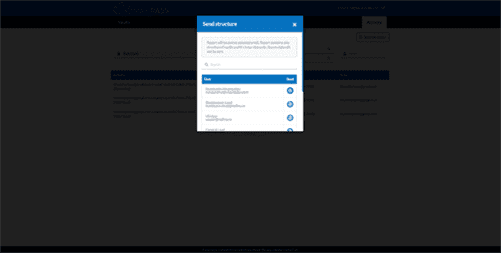Contents
My name is Aseem Kishore and I am a full-time professional blogger. I graduated from Emory University with a degree in Computer Science and Mathematics. https://cryptonews.wiki/ Open Command Prompt and type IPCONFIG then press Enter. Take note of the Default Gateway IP address. On the next page , select No SSL under SSL options.

Now that your FTP details are saved, you can click connect at anytime and access your servers files via FTP. You should now see your FTP server added to the list of Connections we discussed earlier. Right-click on your FTP server where you see Connections, and you can edit permissions, add applications, manage settings, and more. There are two steps required; turning on Internet Information Services and the FTP server followed by configuring the firewall.
Managed DNS Services
The list of functions is often minimal, including uploading, downloading, renaming, moving and deleting FTP-located data. If you want to allow multiple people to download and upload files to the FTP server simultaneously, you need to set up multiple accounts with specific permissions. Here are the steps you can follow to connect Xiaomi or Redmi phone to FTP server using the stock Mi File Manager app. Launch the File Manager app on your Mi phone, tap the Menu button at the upper left corner, choose Remote from the side menu. Then choose Add remote device on the Remote screen, and choose FTP, you will then get a dialog like this.

You won’t be able to access your files when the computer is asleep or hibernating. After completing the steps, all the users you specified should now be able to access the FTP server to download and upload files remotely. Like many of you reading this, I have a router/firewall/wireless access point at home that shares my broadband connection with every internet device in the house. In this Windows 10 guide, we’ll walk you through the steps to set up and manage an FTP server on your computer to transfer files within your home network or remotely over the internet. If you have the capability to go to another computer on a different network, try it out with one of the free FTP clients like Filezilla or Fireftp.
Setting up a static IP address
Please use cloud services instead of FTP if you want to implement any such activity. How to create an FTP server and client on any computer, either personal machine or server mainframe, is a part of system administration backbone practice. To simplify this task for beginners, we provide the step-by-step instruction. This client will need to be running at all times at the network’s location. This client will check your IP address every 5 minutes and if your IP has changed, it will automatically update your hostname with No-IP.

Now all that is left is for you to create a user account and point it to a share/folder. Remember, however, the word “FTP” means only the file transferring protocol. It does not allow changing files by the place, remote opening or securing.
Create a local FTP server on PC
Just test out the usernames and passwords you created and make sure you are able to get to the directories you’ve allowed access to as well as read and write permissions. You are done and have now successfully configured an ftp server Attention Required! Cloudflare with a user account that authenticates with a password to access the share. After the authentication, you can use folders and files located on the FTP server as it were local files and folders located somewhere on your machine.
- Of course, you’re not limited to use File Explorer as there are plenty of FTP clients, such as FileZilla that you can use to transfer files.
- FTP stands for File Transfer Protocol and is used to exchange files on the Internet.
- The last thing you want to do is go to port forwarding and enter the port number you are using and then the IP address of the machine with the FTP server.
If the FTP server is for personal use, you should be fine but be careful in a corporate setting. In the command prompt type in ipconfig to find your IP address. Before you finish the install you have one more chance to review all of your setup info to make sure it’s correct. If no changes are needed, simply click Install. For today’s demonstration, I chose Serv-U FTP because it has an easy to use interface and good reviews.
FTP and SFTP Server Connectors
If you need help setting up your Arc workflows, please don’t hesitate to reach out to our technical team at First, each connector has a dedicated folder within the root folder of the server. To check the location of the root of the server, find the Root Directory field in the Profile page. Each FTP Server Connector and SFTP Server Connector provides a set of login credentials and a dedicated home directory. Thus, each distinct user that needs to connect to your server will have their own S/FTP Server Connector.
Using FTP & SFTP Server Connectors in a Connected Flow
That is all; your built-in FTP server will begin functioning. Check the Web Management Tools option with the default selections, but making sure that the IIS Management Console option is checked. There are plenty third-party solutions to set up a file server of this kind, but even though it may sound complicated, the FTP feature bundled on Windows 10 isn’t difficult to set up. After your initial FTP Server install, a wizard will come up for creating FTP users.
If its a firefox addon then this step will be very easy. If you don’t use Firefox then download Filezilla or one of the premium FTP clients. Try connecting to your FTP server now from your local network and it should work. Add an FTP site name and path to the folder you’ll be using to send and receive files. File transfer protocol or FTP is an old way of transferring files from one computer to another. These days, cloud-based solutions exist and they are more practical for most users.
Check the FTP Extensibility and FTP Service options.
You will have to click on the “change settings” button when the next window appears. A connection to the FTP server can’t be established because the Windows Firewall does not allow access to it. In other words, you will have to explicitly specify to the firewall that access should be granted to this server.
Additionally, we will be adding a few freeware FTP servers you can download at the bottom of this article. Since this approach does not use SFTP Server Connectors, the ‘user’ macro is automatically appended to the server’s Root Directory to keep the files for different users separate. When a remote client uploads a file into the Receive folder of a connector, Arc knows to pass this received file along to the next connector in the Flow. You will also select the second option in the IPv4 settings and input the Public IP from the server you took note of in step one. A home FTP server is useful to anyone who wants to save and retrieve files on their computer from anywhere.
On the right pane, there is a setting marked Security and change the pull-down to Allow SSL/TLS and regular sessions or for even more security set it to Allow only SSL/TLS sessions. There “xxxx” sequences substitutes for elements of IP address or, after the colon, for the port selected to connect with an FTP. If an access to FTP is secured by password, you will be prompted to enter the user name and password by the pop-up window. You can avoid going through the steps to reconnect to the FTP server by right-clicking Quick Access in the left pane, and selecting the Pin current folder to Quick Access option.
Now you’ll never forget a file at home because anything on your home computer will be accessible from anywhere else on earth. Current glossary explains various terms that you may come across while working with Handy Backup or other backup software. On the right pane, click the Add Allow Rule option. In the “Authentication” section, check the Basic option.
Because you want to use SSL, this means you need the additional step of creating your own SSL certificate. If you need a quick one-time FTP server, then you can select No SSL. Next, you can assign an IP address, port, start automatically, and SSL, which should be on. You should be able to run your FTP with the default settings.

